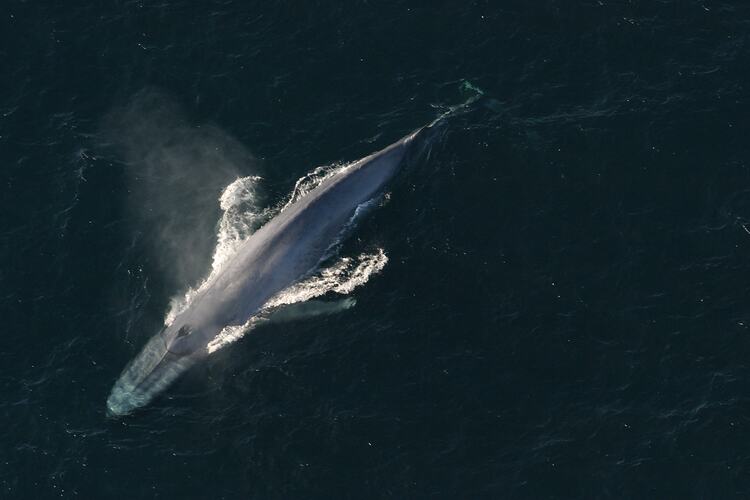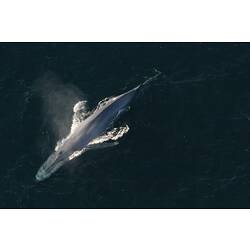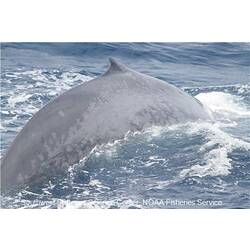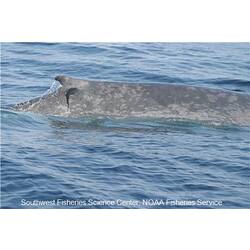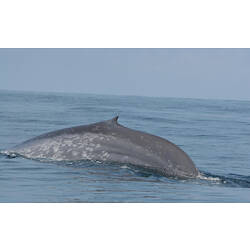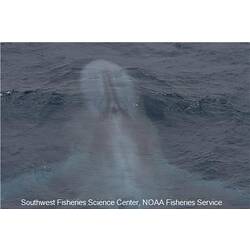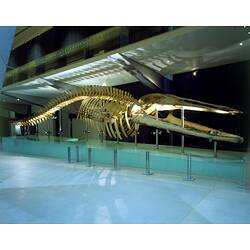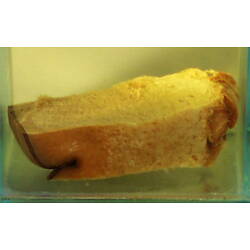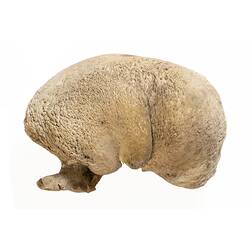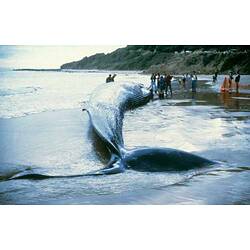General Description
Upper body blue-grey, paler underneath. Lines (throat pleats) underneath from throat to middle of the body. Dorsal fin with curved edge. Tail wide with a pointed notch in the middle of the rear edge. Water spray from blowhole is a vertical jet more than 5 m high. Up to 33 m long.
Biology
Blue Whales feed on krill and usually swim alone or in widely-separated groups. They are the largest mammal alive. The Pygmy Blue Whale subspecies (more often seen in Victoria than Blue Whales) is smaller and has a shorter tail.
Distribution
Worldwide. Most Australian waters.
Habitat
Open oceans and near coastlines.
More Information
-
Animal Type
-
Animal SubType
-
Brief Id
Large whale with blue-grey, curved dorsal fin and a notch in tail. Produces a vertical jet as water spray.
-
Maximum Size
33 m
-
Habitats
-
Diet
Plankton or Particles
-
Endemicity
-
Commercial
No
-
Conservation Statuses
FFG Threatened List: Endangered, EPBC Act 1999: Endangered, IUCN Red List: Endangered, CITES: Trade restrictions (Appendix I)
-
Depths
Shore (0-1 m), Shallow (1-30 m), Deep ( > 30 m)
-
Water Column Locations
Surface, Midwater
-
Taxon Name
-
Scientific Author
Linnaeus, 1758
-
Common Name
Blue Whale
-
Kingdom
-
Phylum
-
Subphylum
-
Class
-
Order
-
Suborder
-
Family
-
Genus
-
Species Name
musculus
